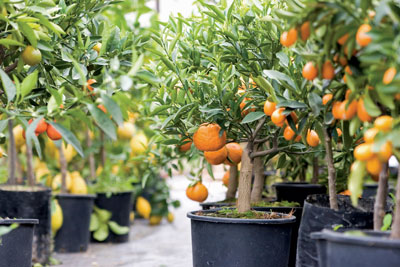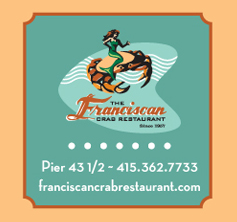
Dwarf citrus trees
Legend has it that Buddha asked all animals to meet him on Chinese New Year, and a year was named after each animal that came. Persons born in that animal’s year are said to possess some of that animal’s trait. If your birth year is a dragon year, you tend to be charismatic, ambitious, brave, intelligent, and charitable. Chinese New Year culminates with the lantern festival, highlighted by the dragon dance. San Francisco’s Chinese New Year parade is Saturday, Feb. 11.
TRADITIONS AND SUPERSTITIONS FOR NEW YEAR’S DAY
• Be sure to give your home a thorough cleaning before the New Year to sweep out ill fortune.
• Don’t clean or dust on New Year’s Day or good fortune might be swept away.
• Open all doors and windows at the stroke of midnight to send out the old year.
• Wear red clothing, considered a bright, happy color that will bring the wearer a sunny and bright future.
• Don’t refer to the past or use negative language.
• Spread good fortune by giving a crisp dollar bill in a red envelope to children and friends.
• Don’t use scissors or knives for fear of cutting off good fortune.
• Live blooming plants symbolize rebirth and new growth.
• Oranges and tangerines are symbols of abundant happiness.
HOW TO HONOR THE NEW YEAR
In honor of Chinese New Year, consider planting your own Meyer lemon, lime, orange, or persimmon dwarf tree. Whether planted in the ground or in a container, a dwarf fruit tree adds beauty, fragrance and function to a landscape, and you can enjoy it for years to come.
The dwarf quality is achieved by grafting orchard-proven cultivars onto dwarf rootstock. Although dwarf fruit trees do well planted directly into the ground, they are also commonly planted in ornamental containers. They can grow to eight feet in the ground, but will stay much smaller if container-planted.
Good drainage is essential. If you are planting in the ground, place the tree in a mound somewhat above grade, and make a water well with a ring of soil about a foot from the stem. The top of the root ball can remain slightly exposed. If you will be planting in a container, make sure it is at least 16 to 20 inches in diameter.
Watering is key. Twice a week may be sufficient, but gauge your watering schedule according to the weather, season and the microclimate of your particular location. Newly planted trees need more frequent watering until they are established. If new growth wilts or has dull leaves, you are waiting too long to water. Dwarf fruit trees are heavy feeders. Fertilize regularly to avoid yellowing leaves.
To thrive, dwarf fruit trees need lots of light. Plant your tree next to a reflective wall with southern exposure. Do the best you can, but don’t worry – the dwarf varieties do extremely well in San Francisco’s microclimates.
Julia Strzesieski is the marketing coordinator for Cole Hardware and can be reached at julia@northsidesf.com








